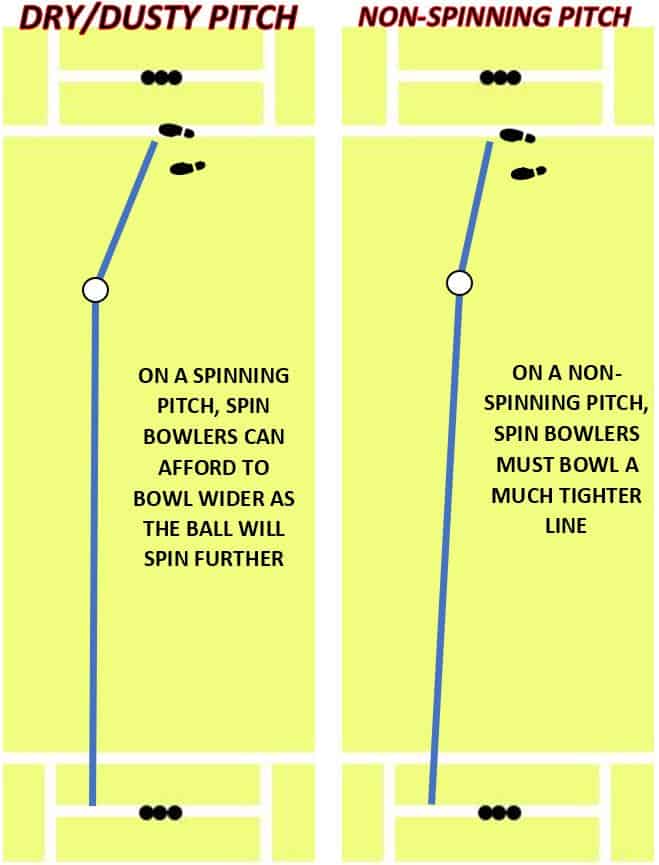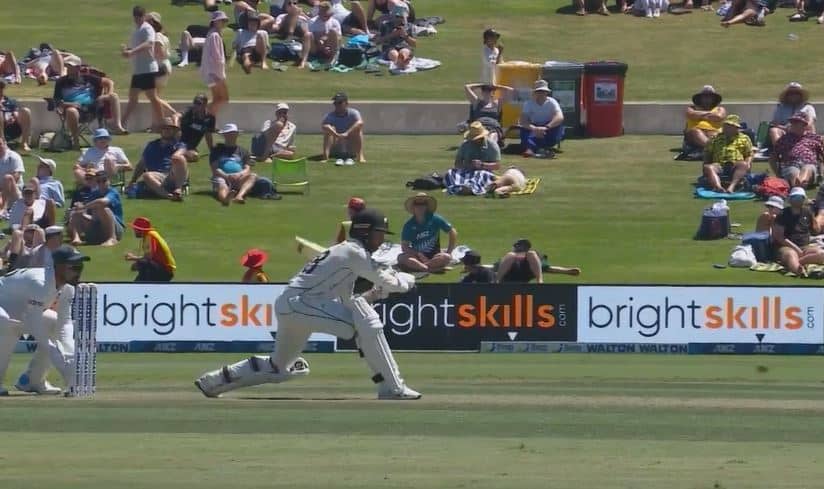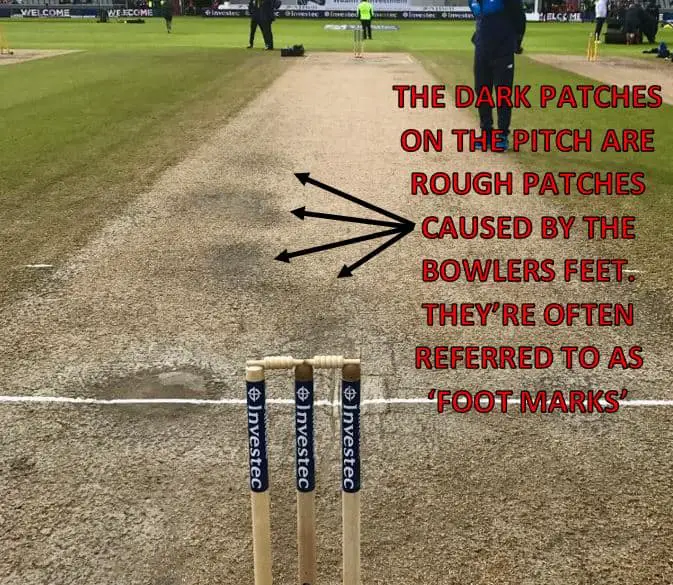In my opinion, one of the most interesting aspects of cricket is the variety of different pitches that the sport can be played on. Before a match, professional teams will spend a long time studying the surface of the pitch in order to pick up information as to how it will impact the game as it progresses. Some pitches will be more batting-friendly (you can read about these here), offering consistent pace and bounce. Some pitches will have a generous covering of green grass, and as a result will be more suitable for seam bowling. There are also some surfaces that are considered to be ‘slow’, and these aren’t really great for batters or bowlers to play on.
Particularly in test matches, one of the big decisions that a captain has to make is whether to play a spinner. This decision will be mainly based on the condition of the pitch and the country the game is being played in. Depending on the anticipated conditions, a team may even decide to play more than one spinner! But what do teams look for when deciding on their spin options? What is it about a pitch that makes it particularly suitable for spin bowling? That’s what I’ll be exploring in this post!
So, what type of pitch is the best for spin bowling?
Spin bowling is much more effective on dry and dusty pitches that have a lot of bounce. This is because dry/dusty surfaces provide more friction between the ball and the pitch, which allows the bowler to spin the ball more. Bouncy pitches make it harder for batters to remain in control while playing on the front foot.
Higher amounts of friction between the ball and the dry surface of the pitch give the ball a much better chance of gripping the surface and spinning sharply. Contrast this with a damp pitch, or one with a decent level of moisture in it. These damp/moist pitches provide much less friction, and as a result the ball will struggle to grip the surface and turn, especially when the ball is new! Therefore, you’ll probably see the ball skid on to the bat a bit more – which makes it easier for batters to deal with.
Why Is It Better To Bowl Spin On Dry/Dusty & Bouncy Pitches?
We’ve already touched on the answer to this question briefly – but I thought it was worth covering in a little more detail!
When bowling on a dry or dusty pitch, the pitch does most of the work for the spin bowler. All the bowler needs to concentrate on is getting good revolutions on the ball, landing it in challenging areas and getting fielders in the right places.
These types of pitches also give the spin bowler much more room for error. For example, when a right arm off spin bowler is bowling to a right handed batter on a turning pitch, it’s much more acceptable for the bowler to land the ball very wide of the off stump, because there is always a chance that the ball will spin aggressively back in towards the off stump. When bowling on a pitch that offers no spin whatsoever, bowlers will need to be much more disciplined and bowl a consistently good line and length on or around the off stump to keep the flow of runs to a minimum. If they were to bowl very wide of the off stump, the batter would be much more comfortable attacking that delivery as they would be sure it was not going to spin sharply in towards them. You can see an explanation of this in the diagram below.

Also, when the batter knows that the ball is spinning a lot, they will be much less likely to play in an aggressive manner, and thus will usually adopt a more defensive approach. If they advance down the wicket towards the bowler, they know that a delivery could spin sharply past the edge of their bat and they could end up stumped. On a non-turning pitch this isn’t really an issue, and they will regularly back themselves to cover the spin when advancing towards the bowler. Playing aggressive shots requires the batter to have a good idea of where the ball is going to be when it reaches them, therefore, dry/dusty pitches that offer large amounts of spin makes it harder for the batter to judge this.
If large amounts of spin can be combined with large amounts of bounce, then the spin bowler truly has everything they need to cause huge problems for the batters. When playing on turning pitches, a lot of batters opt to play cross batted shots like the sweep and the reverse sweep as these make it much easier to hit the ball. When the ball is bouncing pretty normally, or there is low bounce, these shots are fine. However, when the ball is bouncing more than usual, these shots become a huge risk for a batter because it’s easy to get a top edge on the ball and lose control of the shot. This can lead to simple catches for the wicket keepers or other fielders close to the bat. So, bouncy pitches help to take away one of the safe shots that batters use to combat large degrees of spin.
Additionally (as I mentioned earlier), bouncy pitches make it harder for batters to push on to the front foot against spin. If the spin bowler lands the ball on a good length, the batter may be used to playing forward to these kinds of deliveries. However, when the ball is bouncing more, there is a higher chance that they will not hit the ball in the middle of the bat. Instead, the ball could come off an edge, or it could hit the shoulder of the bat or the glove and pop up into the hands of a close fielder. This is a common dismissal type for bowlers like Nathan Lyon who get a lot of topspin on the ball.

Where Are Good Spin Bowling Pitches Usually Found?
The dusty and dry pitches that are most helpful for spin bowlers are most often found in cricket playing nations such as India, Sri Lanka and Pakistan. These countries are very hot and humid, and thus the conditions are perfect for ground staff to produce pitches have dusty and dry surfaces that will spin a lot. In countries like these, you’re much less likely to see pitches that have plenty of green grass on them (such as the ones regularly seen in England), because the moisture required to produce a pitch like this just isn’t available.
In countries like India, Sri Lanka and Pakistan it’s common to see spin bowlers opening the bowling instead of fast bowlers! This is something that you’re unlikely to see anywhere else in the world. This happens because the bowling conditions are much more favourable for spinner at most points in the match – even early on with the new ball! Fast bowlers are less likely to find the assistance they need on pitches like these.
It’s worth mentioning that it is possible to produce very good spin bowling pitches elsewhere in the world too, it just doesn’t happen as regularly as it does in the countries I mentioned above. For example, in the height of the English summer, ground staff may be able to prepare a pitch that will produce plenty of turn once a match reaches day 3, 4 or 5, particularly if there has been a lot of hot weather in the days leading up to the game. However, this happens far less often in a country like England than it does in a country like England, and you’d almost never see a spinner opening the bowling in a test match in England.
How Does ‘The Rough’ Affect Spin Bowling?
If you watch spin bowlers bowling late in the game in a test match, you may hear commentators talking about landing the ball in ‘the rough’. If you’re not sure what this is and how it impacts spin, allow me to explain!
The term ‘rough’ in a cricket context basically refers to rough, dry areas that appear on the surface of the pitch as a result of fast bowlers continually tearing up the pitch with their spikes as they bowl. As the game goes on and bowlers continue to tear up the pitch, these rough areas will get drier and rougher. Eventually, these rough patches will make excellent targets for spin bowlers to bowl into!
If the spinner can land the ball in these areas, it often leads to the ball behaving very unpredictably. Some deliveries will bounce sharply and some will scoot low to the ground. Some deliveries will spin big, and some will just spin a normal amount. If rough patches start appearing, the rest of the pitch doesn’t need to be that dry or dusty – the spinner can just aim for the rough areas. This is the best way to get the ball to spin big amounts in countries like England – as it’s very unlikely that a dry/dusty pitch will be possible to prepare.
If you’d like to read more about the rough in cricket, and how spin bowlers should utilise it – click here to read one of my posts covering that!

Conclusion
I hope that this post has given you a better idea of what sort of pitches spin bowlers would prefer to bowl on. Spin bowling is a complex art that takes a lot of time to master, so any help we can get from the pitch is much appreciated!
If you’re a spin bowler who is looking to work on your game, I have plenty of posts here on the site that should help you get started! Off spin bowlers wanting to perfect their off spin deliveries should click here. If you’re a leg spin bowler who wants to master the art of leg spin bowling – click here! Finally, I’ve also got a huge post that covers how to bowl all of the main spin bowling variations – and you can read that by following the link here. All of those posts are great resources for up and coming spin bowlers!
